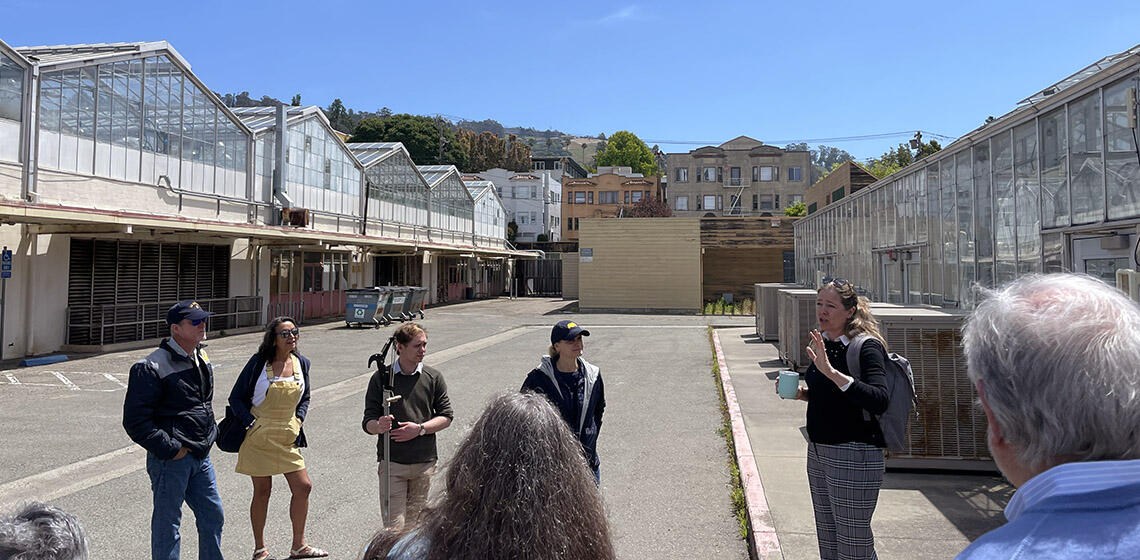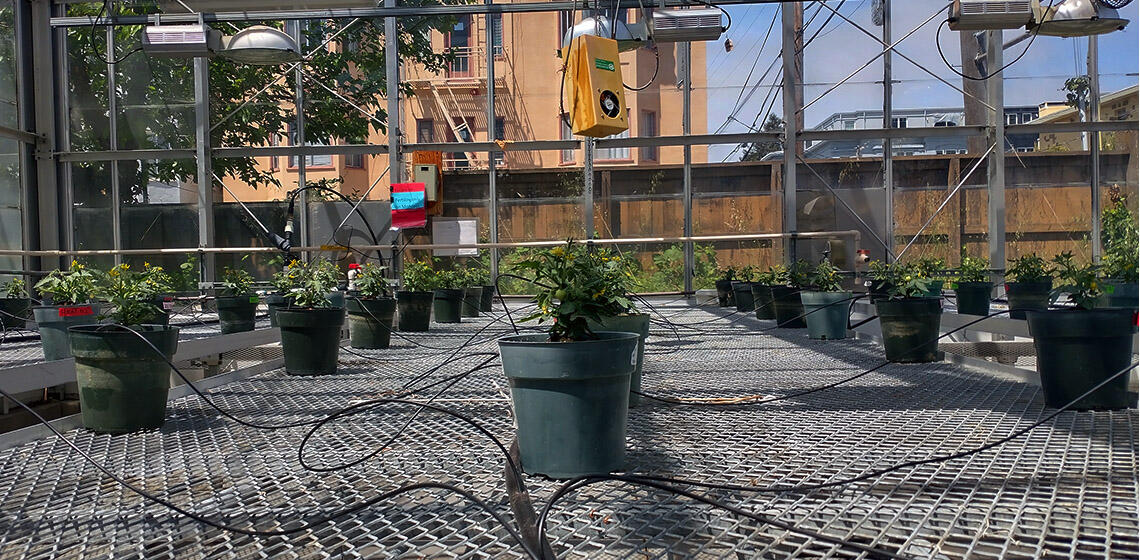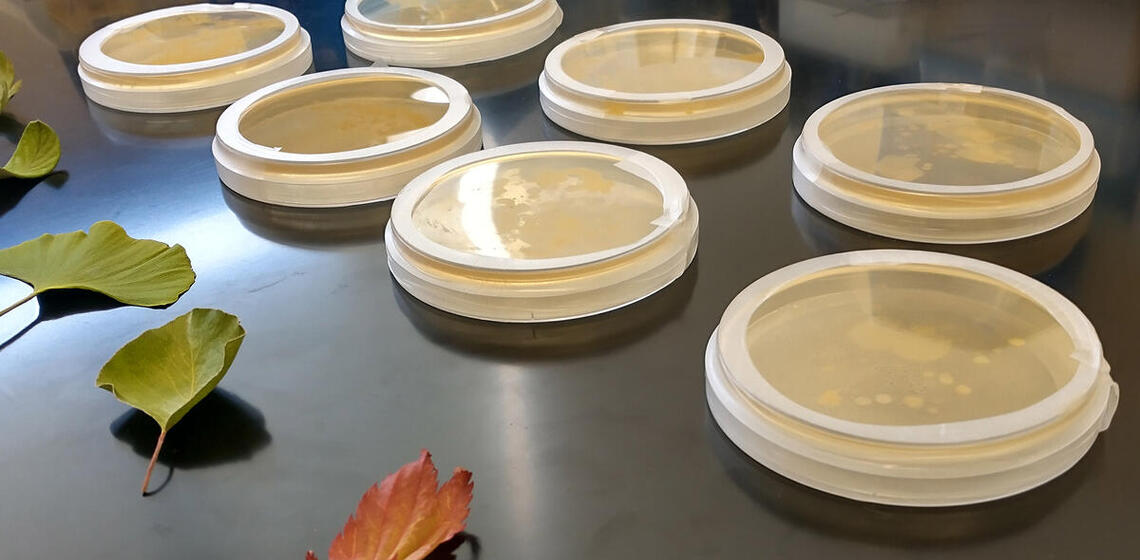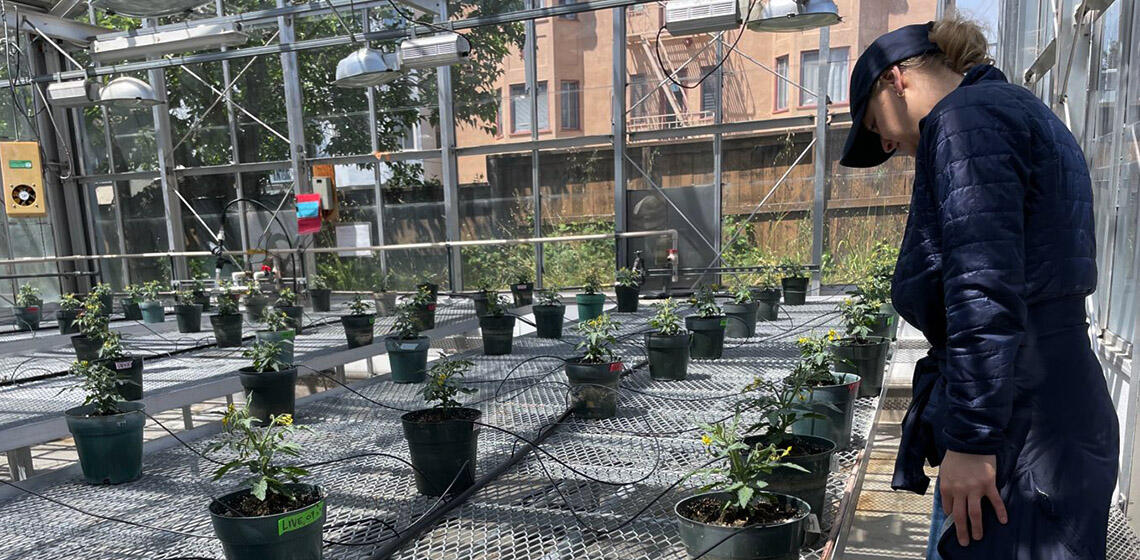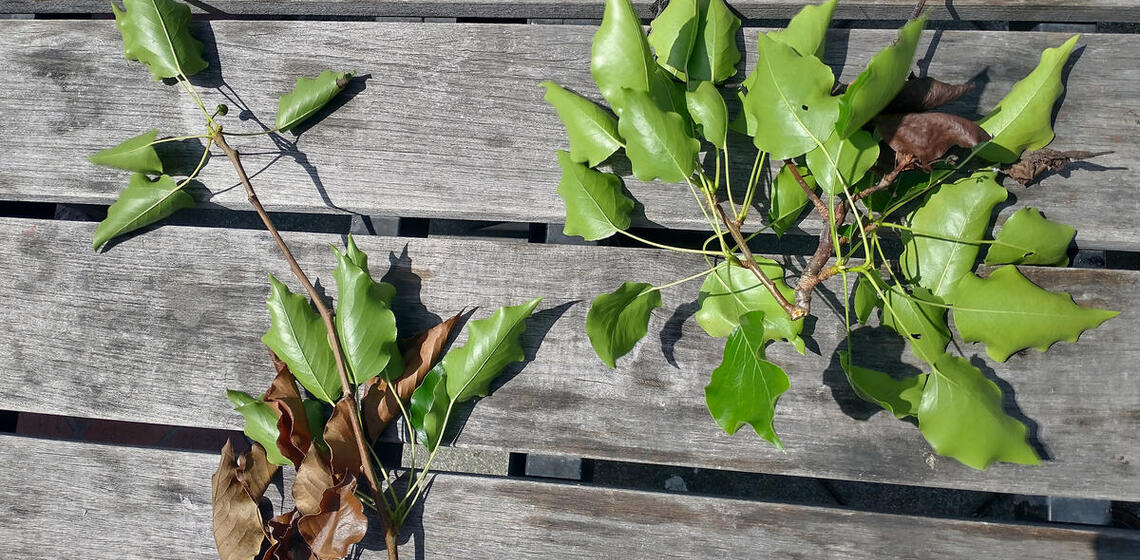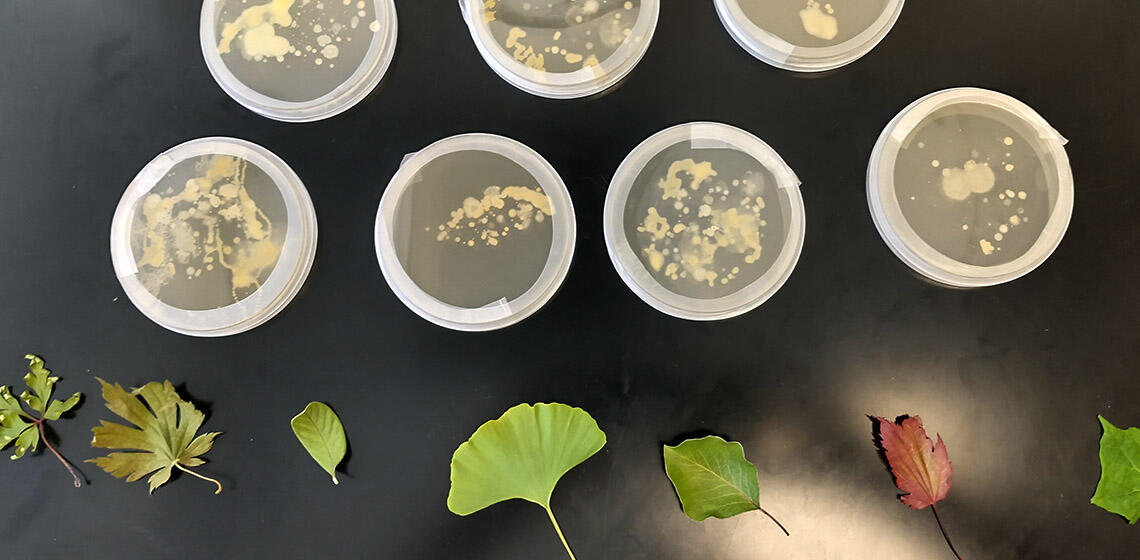
“I was not a born biologist,” Britt Koskella admitted to a group of UC Berkeley alums, donors, and friends on a Sunday morning in May.
While in college, Koskella secured a research job where she witnessed a population of fungi evolve in front of her eyes. She was hooked.



